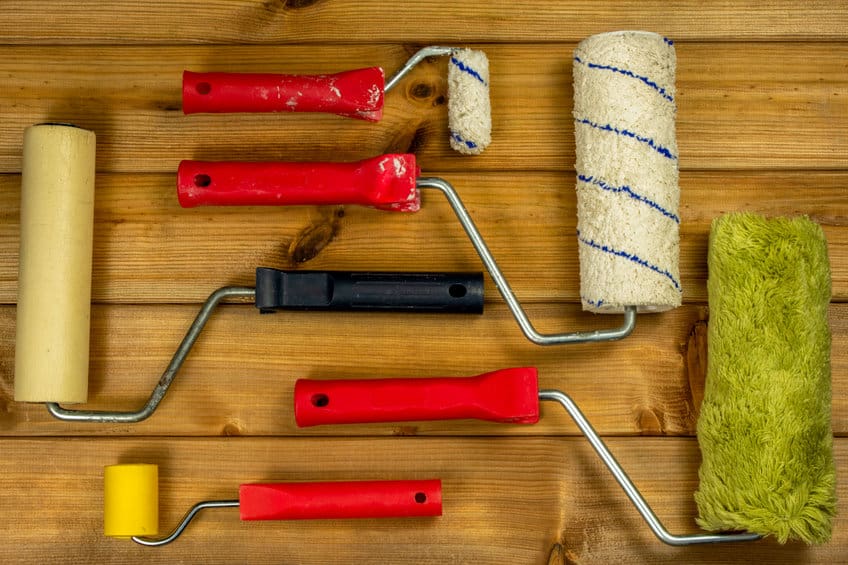Choosing the best roller for your job requires understanding a little about roller sizing, types, and thickness. Then there are a few wrinkles depending on whether you’re staining, painting, or sealing. In this article, we’ll step through the different aspects of rollers to help you make an appropriate choice for your task.
Why use a roller? Well, they’re fast when covering large areas, they’re easy to use, and they generally provide a smoother finish than a paintbrush. You can get different covers suitable for every surface, and you can use frame extensions to reach out-of-the-way spots.
Roller Components

Paint rollers consist of two components: the one-piece handle and frame, and the roller cover. The cover slides onto the frame for use and is removed for cleaning and storage.
Roller Frame Size Selection
The frames come in multiple sizes to suit your application. The standard size can be from 7 to 12-inches wide. You’ll find 9-inches a frequently used size. The small frames are 6 to 7-inches wide, and the mini frames are 5-inches or less.
You should select the frame size based on the size of the job. Too big is cumbersome to use, and too small will take forever and can leave marks. For a rule-of-thumb, think standard size for walls, ceilings, and floors; small for furniture or smaller expanses; and mini for cutting into corners, skirting boards, cornices, and painting edges of a wall before using the standard size roller to fill in. You can often buy sets of different-sized rollers.
Roller Cover Materials
With inner cardboard or plastic sleeve and an outer material that applies the paint, roller materials can be natural, synthetic, or foam.
Natural covers are usually lambswool or mohair. These are best suited to oil-based paints, and while suitable for any surface texture, they are excellent when used on heavily textured surfaces.
Synthetic covers can be nylon, polyester, or a hybrid material like microfiber. They give a smooth finish. Good with water-based paints, they too can be used on any surface texture.
Foam covers are suitable for oil-based and high-gloss latex paints. Often used for very porous surfaces such as bare wood.
Roller Cover Nap, Or Thickness

Variously called nap, pile, or thickness, the terms refer to the cover material’s depth. They range from 1-1/2 inches thick down to 3/16 inches. The selection of the thickness depends on the surface texture you are painting and the finish required.
Use the thicker covers for rough and textured surfaces and the shorter nap for smooth surfaces. If you’re painting an interior door surface, or a metal surface, use the 3/16 cover. For rough masonry and brick walls, go thick.
Staining, Sealing With A Roller
You can use a roller for both of these tasks. Yet, there are a couple of tips to know that will give you the best results.
When applying stain, be careful with overlapping edges. You can end up with darker areas due to the two coats. Light application without too much overlapping is best. For oil-based or acrylic stains, use a synthetic roller cover with a nap of 1/4-inch or less. Alkyd stains are best used with a natural roller cover. When staining, naps longer than 1/4-inch can cause the stain to pool, creating uneven patches.
When sealing with products like polyurethane, use a short nap lambswool roller. You’ll get a nice smooth and even application, as it eliminates brush marks. It’s also much quicker.
In Summary
Rollers are perfect for areas of extensive coverage or those applications where you need a very smooth finish without bristle marks. My last piece of advice is to buy quality rollers and clean them well. They’ll last you many years, and they’ll give you the finish you desire. Good luck with your project!
